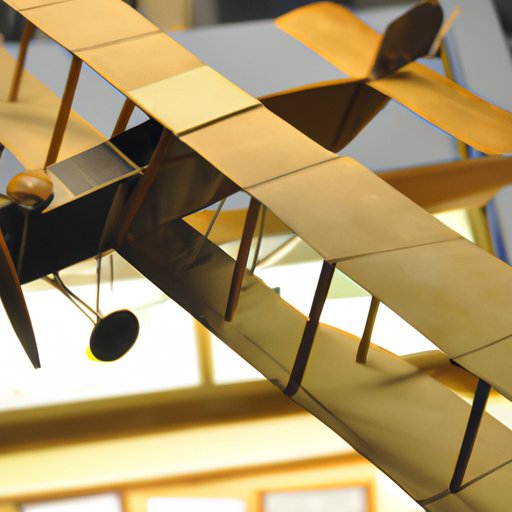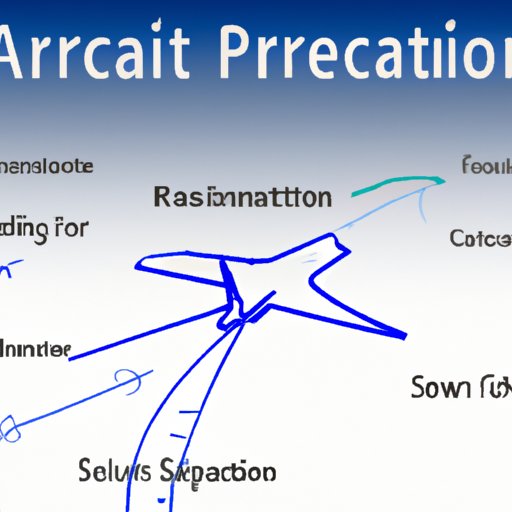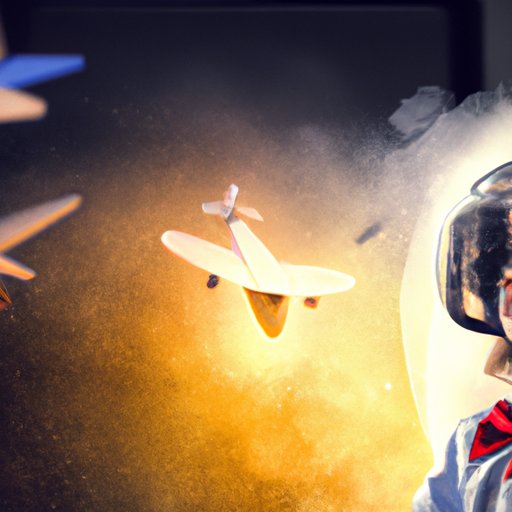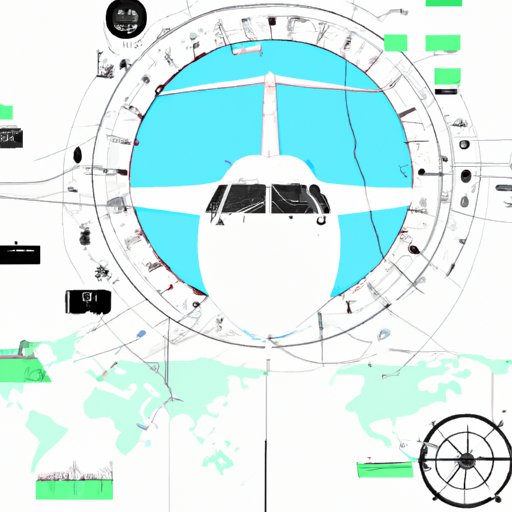Introduction
Aeronautical Science is a field of study that focuses on the research, development, and application of aircraft and propulsion systems. It involves the use of physics and mathematics to understand the physical forces involved in flight and to develop the necessary technologies to make it possible. The field of aeronautical science encompasses a wide range of topics, from aircraft design and performance to flight control systems and navigation. In this article, we will explore the basics of aeronautical science, how it impacts modern flight, its history and evolution, education and career paths, and the future of the field.
Exploring the Basics of Aeronautical Science
To understand what aeronautical science is, it is important to first understand the two main disciplines that underpin the field: physics and mathematics. Physics provides an understanding of the physical forces involved in flight, while mathematics is used to calculate and analyze these forces.
What is Aeronautical Science?
At its core, aeronautical science is the study of the principles of flight and the application of these principles to the design and operation of aircraft. It involves the use of physics and mathematics to understand the physical forces involved in flight and to develop the necessary technologies to make it possible. This includes the study of aerodynamics, propulsion, materials science, structural design, and navigation.
The Role of Physics in Aeronautical Science
Physics is essential for understanding the physical forces involved in flight. This includes studying the properties of air and the behavior of gases, as well as the forces of lift, drag, thrust, and weight. Physics also plays a role in the design of aircraft and propulsion systems, as well as in the development of new materials and structures.
The Role of Mathematics in Aeronautical Science
Mathematics is used to calculate and analyze the physical forces involved in flight. This includes using calculus to calculate the trajectories of aircraft, as well as using algebra and trigonometry to analyze the performance of aircraft and propulsion systems. Mathematics is also used to develop computer models to simulate the behavior of aircraft in various conditions.
How Aeronautical Science Impacts Modern Flight
Aeronautical science has had a significant impact on modern flight. From aircraft design and performance to flight control systems and navigation, aeronautical science has played an important role in the development of modern aviation.
Aircraft Design and Performance
Aeronautical science has helped to improve the design and performance of aircraft. By applying the principles of aerodynamics and propulsion, engineers are able to design aircraft that are more efficient and have greater range and performance. Aeronautical science has also enabled the development of lighter and stronger materials, which have allowed aircraft to become faster, safer, and more fuel-efficient.
Flight Control Systems
Aeronautical science has enabled the development of sophisticated flight control systems. These systems use computers to monitor and control the flight of an aircraft, allowing pilots to fly safely and efficiently. The use of aeronautical science in the design of these systems has allowed for greater precision and improved safety.
Navigation and Air Traffic Control
Aeronautical science has also had an impact on navigation and air traffic control. By using mathematics and physics, engineers have been able to develop systems that allow for more precise navigation and more efficient air traffic control. This has led to improved safety and efficiency in the aviation industry.

Examining the History and Evolution of Aeronautical Science
Aeronautical science has a long and fascinating history, stretching back centuries. Over time, the field has evolved significantly, with advances in technology leading to major breakthroughs in the understanding and application of aeronautical science.
Early Developments in Aeronautical Science
The earliest developments in aeronautical science can be traced back to ancient times. Early pioneers such as Leonardo da Vinci studied the principles of flight and experimented with designs for aircraft. As time went on, scientists continued to build on these early theories, leading to the development of more sophisticated aircraft designs and propulsion systems.
Recent Advances in Aeronautical Science
In recent years, there have been major advances in aeronautical science. Computers have enabled engineers to develop more sophisticated aircraft designs and systems, while new materials and structures have allowed for greater performance and efficiency. In addition, advances in navigation and air traffic control have made flying safer and more efficient.

The Education and Career Paths in Aeronautical Science
Aeronautical science is a highly specialized field that requires a combination of technical knowledge and practical experience. People interested in pursuing a career in aeronautical science must have a strong background in physics and mathematics, as well as a good understanding of aircraft design and systems.
Degrees and Certifications
People interested in aeronautical science typically pursue degrees in engineering or a related field. There are also a number of certifications available for those who want to specialize in specific areas of aeronautical science, such as aircraft design or flight control systems.
Job Opportunities
Aeronautical science is an ever-evolving field with numerous job opportunities. Positions are available in a variety of industries, including aerospace, defense, and aviation. Common job titles include aircraft designer, test pilot, air traffic controller, and systems engineer.

Exploring the Future of Aeronautical Science
Aeronautical science is constantly evolving, and there are many exciting new developments on the horizon. From autonomous flight technology to alternative fuels and space exploration, the future of aeronautical science looks bright.
Autonomous Flight Technology
Autonomous flight technology is one of the most promising areas of aeronautical science. This technology uses artificial intelligence to enable aircraft to fly without a human pilot. It promises to revolutionize the aviation industry, making flying safer, more efficient, and more accessible.
Alternative Fuels
Another area of research in aeronautical science is alternative fuels. Researchers are exploring the use of biofuels, hydrogen, and other renewable energy sources to power aircraft. This could lead to a dramatic reduction in emissions from the aviation industry.
Space Exploration
Aeronautical science has also opened up new possibilities for space exploration. By applying the principles of aeronautical science to spacecraft design and propulsion, engineers are able to develop more efficient and capable spacecraft, opening the door to exploration of other planets and beyond.
Conclusion
Aeronautical science is a fascinating and complex field of study that combines physics and mathematics to inform aircraft design and performance, flight control systems, navigation, air traffic control, and more. This article has explored the basics of aeronautical science, how it impacts modern flight, its history and evolution, education and career paths, and the future of the field. With advances in technology and new applications of aeronautical science, the future of aviation looks promising.
Summary of Key Points
Aeronautical science is a field of study that combines physics and mathematics to understand the physical forces involved in flight and to develop the necessary technologies to make it possible. This includes the study of aerodynamics, propulsion, materials science, structural design, and navigation. Aeronautical science has had a significant impact on modern flight, from aircraft design and performance to flight control systems and navigation. The field has a long and fascinating history, and its future looks bright, with advances in autonomous flight technology, alternative fuels, and space exploration. People interested in pursuing a career in aeronautical science must have a strong background in physics and mathematics, as well as a good understanding of aircraft design and systems.
Closing Thoughts
Aeronautical science is an ever-evolving field with numerous opportunities for those interested in pursuing a career in this field. It is a fascinating and complex subject, and its importance will only continue to grow in the future. For those looking to enter the field, it is important to have a strong foundation in physics and mathematics, as well as a good understanding of aircraft design and systems.
(Note: Is this article not meeting your expectations? Do you have knowledge or insights to share? Unlock new opportunities and expand your reach by joining our authors team. Click Registration to join us and share your expertise with our readers.)
